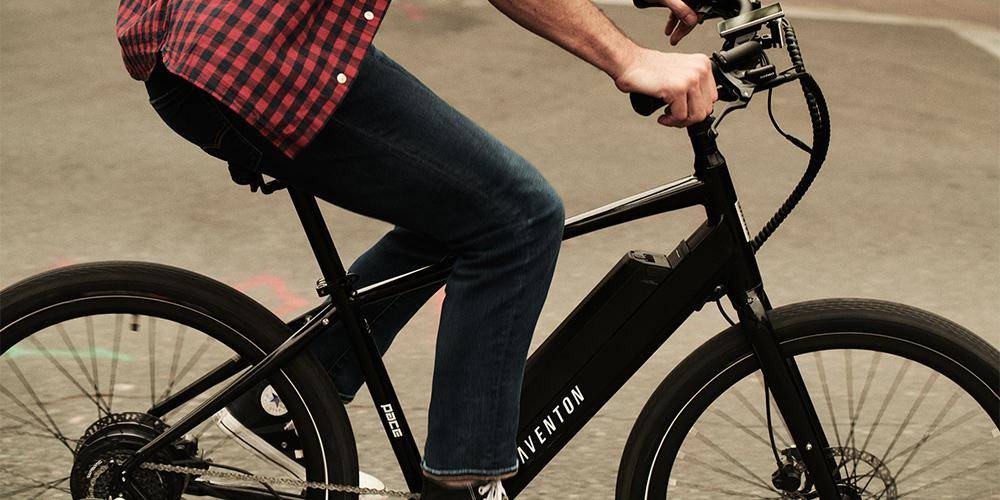Ebikes offer motorized assistance, differing significantly from regular bikes in operation.
How Ebikes Work
Electric bikes, commonly known as ebikes, have revolutionized the way we think about cycling. They blend the traditional cycling experience with the added power of an electric motor, offering a unique and efficient mode of transportation. Let’s delve into the intricacies of how ebikes function.
Understanding the Motor and Battery System
The heart of an ebike is its motor and battery system. The motor, typically mounted on the bike’s frame, provides additional power to the pedals or wheel. This motor is powered by a rechargeable battery, usually lithium-ion, known for its longevity and efficiency. The motor’s power is measured in watts, often ranging between 250 to 750 watts, providing a significant boost to the rider’s own pedal power.
For the battery, capacity is key. Measured in watt-hours (Wh), a typical ebike battery ranges from 250Wh to 900Wh, determining how far you can ride on a single charge. The battery’s lifespan is also crucial, with most offering 500 to 1,000 charge cycles before significant degradation.
Pedal Assist vs. Throttle Mode: Key Differences
Ebike motors operate primarily in two modes: pedal assist and throttle.
- Pedal Assist: This mode engages the motor when you start pedaling. The level of assistance can vary, often controlled through a handlebar-mounted display. It’s more efficient and extends the battery life, as the motor only works when you pedal.
- Throttle Mode: Similar to a motorcycle, throttle mode propels the bike without the need for pedaling. It’s less energy-efficient than pedal assist but offers an effortless ride, ideal for those who need a break from pedaling or are tackling steep inclines.
Charging and Maintaining an Ebike Battery
Proper charging and maintenance are vital for maximizing an ebike battery’s lifespan. Charging times vary depending on the battery size and charger’s power output. A standard 500Wh battery takes about 4-6 hours to charge fully using a regular charger. Fast chargers can reduce this time by half, but they may affect the battery’s longevity.
Maintenance involves regular checks for any signs of wear or damage, ensuring the connections are clean and secure, and storing the battery in a cool, dry place. It’s also crucial to avoid completely draining the battery, as this can reduce its overall lifespan.
Comparing Ebikes and Regular Bikes
The comparison between electric bikes (ebikes) and regular bikes reveals some striking differences and similarities. While both serve the primary purpose of transportation and exercise, their design, performance, and health benefits vary significantly.
Physical Design and Structure
Ebikes typically feature a more robust frame to support the added weight of the motor and battery. This additional weight, which can range from 15 to 30 kilograms, makes ebikes heavier than regular bikes. The presence of a motor and battery also influences the overall design, often resulting in a bulkier appearance.
| Feature | Ebike | Regular Bike |
|---|---|---|
| Weight | 20-30 kg | 6-12 kg |
| Frame | Reinforced to support extra components | Lightweight |
| Components | Motor, battery, control system | – |
For more detailed specifications on bike frames, the Wikipedia page on Bicycle Frame offers valuable insights.
Performance: Speed, Range, and Terrain
Ebikes outperform regular bikes in terms of speed and range due to the motor’s power. However, the terrain they can handle varies based on the bike’s design and motor strength.
| Feature | Ebike | Regular Bike |
|---|---|---|
| Speed | Up to 25-45 km/h (limited by law in some regions) | 15-30 km/h |
| Range | 40-100 km per charge | Unlimited (human-powered) |
| Terrain | Varied, dependent on motor power | Mostly flat to moderate inclines |
Visit Electric Bicycle – Wikipedia for an in-depth look at ebike performance.
Health Benefits and Exercise Potential
While ebikes provide electric assistance, they still offer significant exercise potential, especially in pedal-assist mode. Regular bikes, on the other hand, provide a more intense workout due to the lack of motorized assistance.
| Feature | Ebike | Regular Bike |
|---|---|---|
| Exercise Intensity | Moderate, adjustable with motor assistance | High, fully human-powered |
| Accessibility | Suitable for a wider range of fitness levels | Requires a certain level of physical fitness |
| Cardiovascular Benefit | Moderate, can be adjusted with assistance levels | High, due to continuous pedaling |
For a deeper understanding of the health benefits of cycling, the Wikipedia page on Cycling is a comprehensive source.
Safety Considerations for Ebike Riders
Safety is paramount for ebike riders, given the higher speeds and unique characteristics of these vehicles. Understanding and adhering to safety norms not only protects the riders but also ensures a harmonious sharing of roads and paths with other users.
Essential Safety Gear
When riding an ebike, the right safety gear is crucial. A helmet is non-negotiable, and it’s advisable to choose one that meets established safety standards like ASTM, CPSC, or EN 1078. Reflective clothing and lights enhance visibility, particularly important for ebikes due to their higher cruising speeds. Additional gear such as gloves, knee and elbow pads can provide extra protection in case of falls or collisions.
Navigating Urban and Rural Terrain
Ebikes are versatile, but different terrains pose different challenges:
- Urban Terrain: The hustle of city roads demands heightened awareness. Ebike riders should be vigilant of traffic, pedestrians, and obstacles like potholes. Using bike lanes where available and adhering to traffic signals is critical. The motor’s power should be used judiciously in crowded areas to avoid accidents.
- Rural Terrain: While rural rides offer scenic views, they also come with less predictable paths. Uneven surfaces, gravel, or wet conditions require careful handling. Ebike riders should adjust their speed accordingly and be prepared for sudden changes in the terrain.
For comprehensive safety guidelines, the Wikipedia page on Bicycle Safety offers valuable insights.
Legal Regulations and Compliance
Legal compliance is essential for every ebike rider. Regulations vary by region, but common aspects include:
- Speed Limits: Many regions have a legal speed limit for ebikes, often around 25 km/h (15.5 mph). This limit is essential to adhere to, both for legal and safety reasons.
- Age Restrictions: Some areas impose age restrictions for riding ebikes, typically requiring riders to be over a certain age, like 16 years old.
- Helmet Laws: Helmet laws vary, but wearing one is always advisable. In some jurisdictions, wearing a helmet is legally required, especially for younger riders.
- Road Usage: Ebikes may be restricted from certain paths or areas. Familiarizing oneself with local laws about where ebikes can be ridden is crucial.
Staying informed about local ebike laws and regulations ensures compliance and safety. For more information on ebike laws, the Electric Bicycle Laws – Wikipedia page can be consulted.
Ebike Technology Advances
The technology behind electric bikes (ebikes) is rapidly evolving, with significant advancements in battery and motor design, integration of smart features, and connectivity. These advancements aim to enhance the performance, convenience, and overall experience of ebike users.
Innovations in Battery and Motor Design
Recent developments in battery and motor technology have significantly improved the efficiency and performance of ebikes.
- High-Efficiency Batteries: Modern ebikes feature lithium-ion batteries known for their high energy density and long life. Innovations are focusing on increasing their capacity without significantly adding to the weight or size. Current ebike batteries range from 500Wh to 900Wh, providing a range of up to 100 km on a single charge.
- Compact and Powerful Motors: The trend in motor design is towards more compact and lightweight models, offering higher power output. Motors now commonly offer between 250 and 750 watts, providing sufficient power to tackle steep inclines and accelerate quickly. The focus is also on making these motors more efficient, reducing energy consumption and increasing range.
For more detailed insights into battery and motor technology, the Electric Bicycle – Wikipedia page is a great resource.
Smart Features and Connectivity
Smart technology integration is transforming ebikes into more than just vehicles; they’re becoming connected gadgets.
- Integrated GPS and Navigation: Many modern ebikes come with built-in GPS systems, allowing for real-time navigation and tracking. This feature is particularly useful for urban commuters and recreational riders exploring new trails.
- App Connectivity: Connectivity with smartphone apps enables riders to unlock additional features like ride analytics, battery status, and even remote locking and unlocking of the ebike.
- Customizable Riding Modes: Advanced software allows riders to customize their riding experience, adjusting motor output and battery usage based on personal preferences and riding conditions.
Future Trends in Ebike Development
Looking ahead, several key trends are set to shape the future of ebike technology.
- Solar Charging Integration: Research is ongoing in integrating solar cells into ebikes, allowing for on-the-go charging and extended range, potentially revolutionizing long-distance travel on ebikes.
- Automated Safety Features: Future ebikes may include more automated safety features like collision avoidance systems and automatic signaling based on GPS and ride data.
- Sustainable Materials: As the focus on sustainability grows, we can expect to see more ebikes made from recycled materials or sustainable alternatives, reducing the environmental footprint of manufacturing.
- Ebike Sharing Systems: Expansion of ebike sharing systems in urban areas is likely to continue, making ebikes more accessible to a broader range of users and reducing urban traffic congestion.
For a deeper understanding of the future trends in ebike technology, Electric Bicycle – Wikipedia offers a wealth of information.


